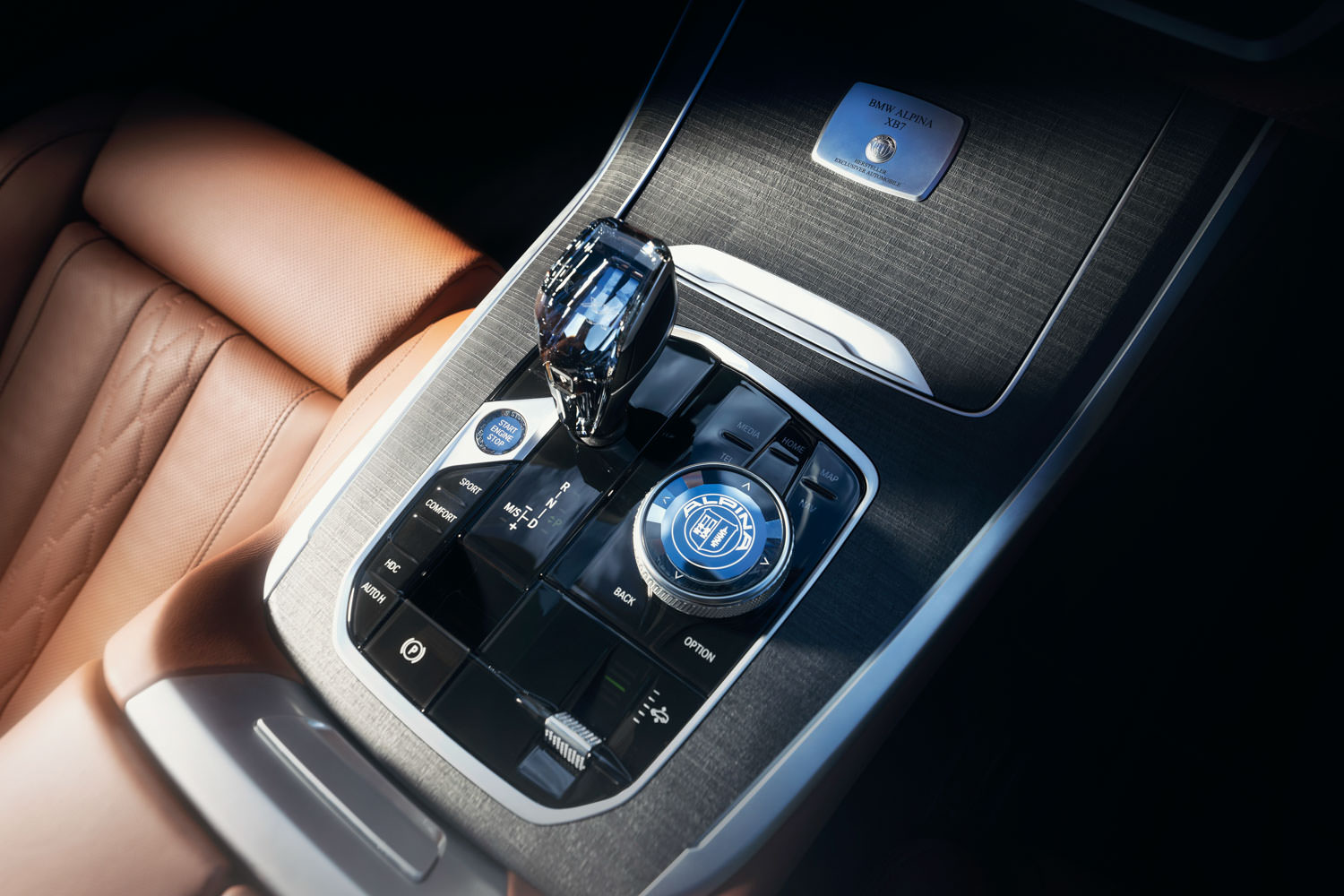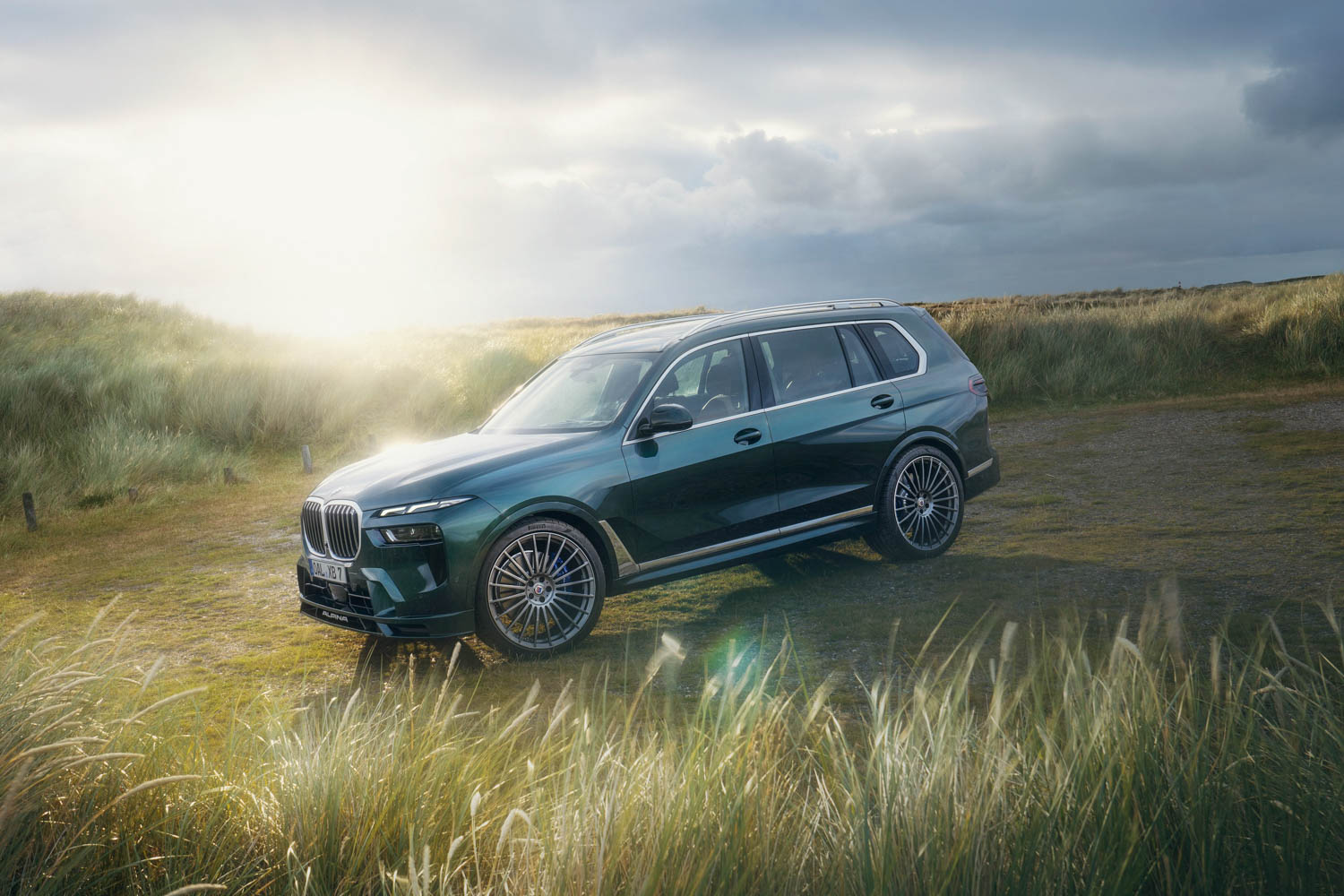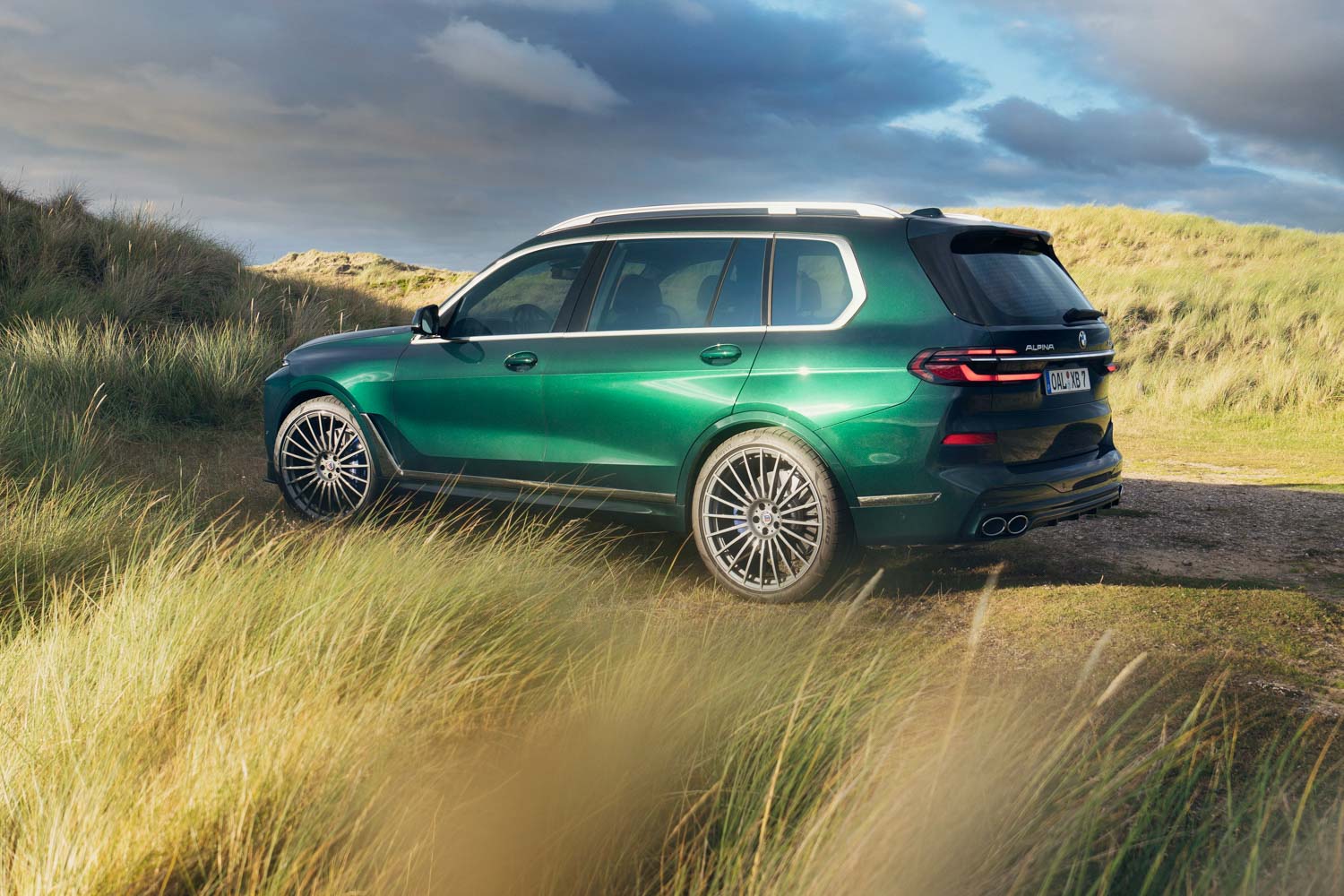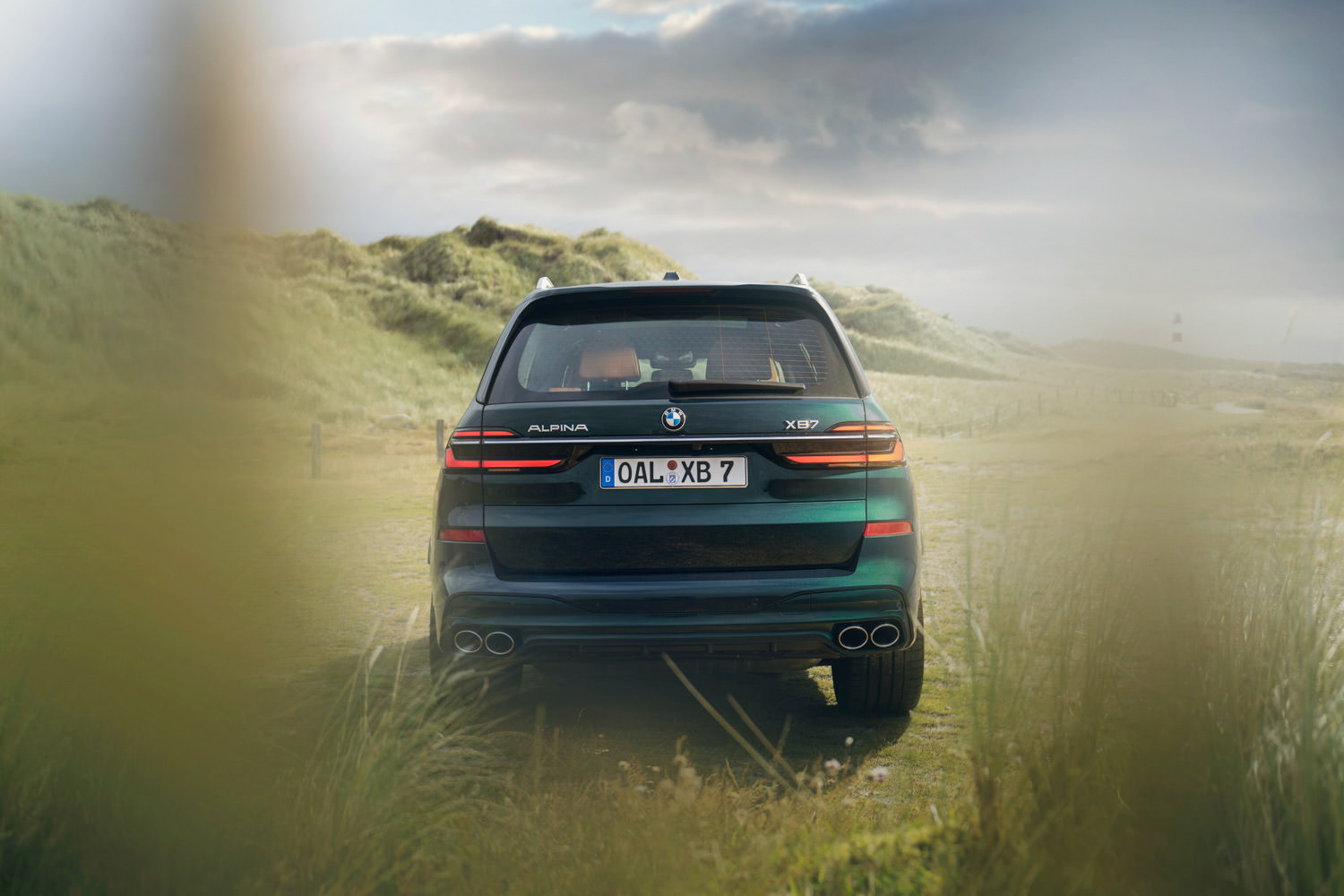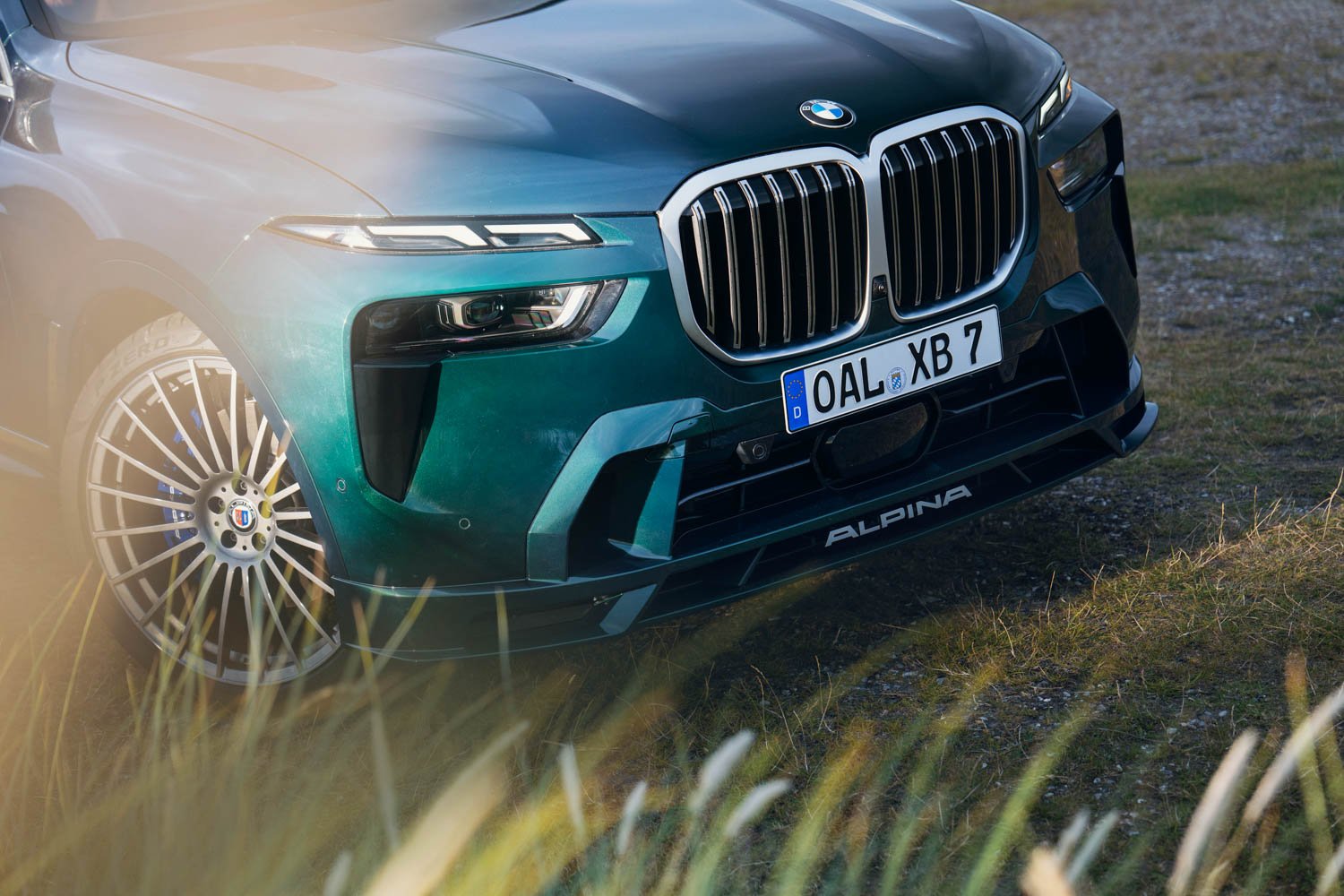Updated Alpina XB7 debuts with 639hp
The new XB7 is Alpina’s take on BMW’s flagship SUV.
Alpina, the formerly-independent tuner now officially under the BMW umbrella, has unveiled its latest take on BMW’s recently-refreshed flagship SUV and it’s called the XB7.
With its newly-added split-level headlight units, the XB7 has seen some light styling work, including the addition of trademark multi-spoke Alpina alloy wheels and a lower front valance in its transition to the XB7. The bulk of the work comes in the form of tuning and handling tweaks, putting the Alpina a cut above BMW’s X7 M60i range-topper.
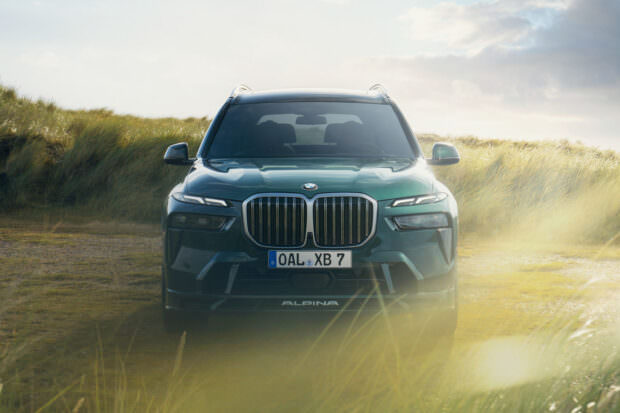
Even though it employs the same hybrid-assisted 4.4-litre V8 engine as the M60i, there’s an additional 100hp over that, thanks to cooling and engine management system changes. Overall, there’s an extra 18hp above the previous Alpina version. The XB7 gets an Alpina-specific engine management unit and a cooling system bolstered to handle the extra power and aid in performance. The radiator is bigger and features an integrated cooler for the transmission; new external oil and water coolers help things in their departments. A new system for cooling the intercoolers includes beefed-up water hoses that ensure they’re always performing most efficiently.
Like the M60i, the Alpina uses an eight-speed automatic transmission, though with the addition of wheel-mounted shift buttons for faster gear changes. The BMW xDrive all-wheel drive system looks after the torque distribution, as does an electronically-variable limited-slip differential at the rear axle.
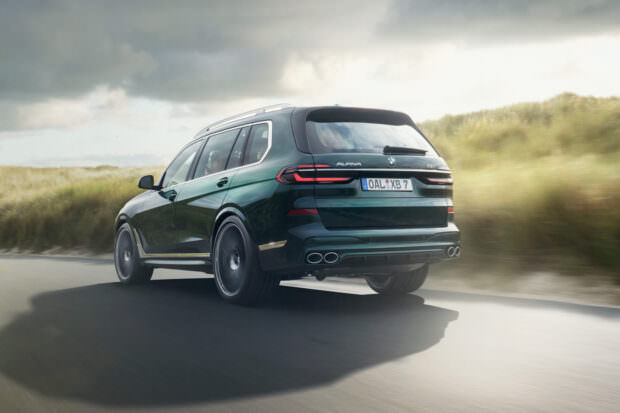
The Alpina XB7 has blistering performance
All of this adds up to a full 639hp which translates into a 0-100km/h sprint time of four seconds and a top speed of 290km/h.
Making the XB7 go is one thing, but stopping it is another — something that’s taken care of by four-piston brake calipers and big 15.5-inch brake discs on the front axle and even bigger 15.7-inch discs at the rear. The enormous 20-spoke 23-inch alloy wheels are standard, though smaller 21-inch rims are an option too.
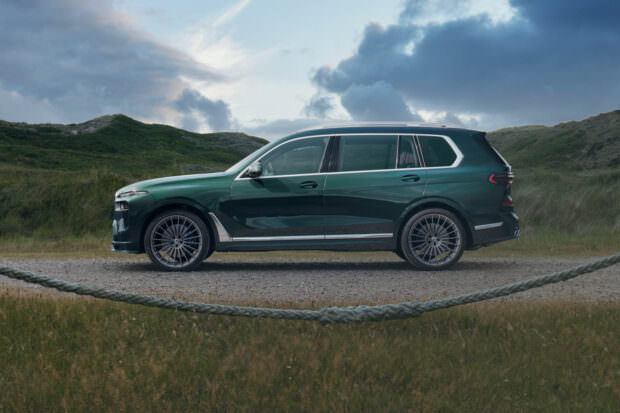
The air suspension of the X7 is retained in the XB7. However, Alpina-specific dampers improve both the handling and ride comfort with the settings on the air suspension adjustable depending on how the driver wants the ride height — high for tricky ramps or low in Sport and Sport+ mode for better handling and a lower centre of gravity.
Chassis tweaks for the Alpina XB7
The XB7’s body is more rigid than the base X7 due to the new Alpina bulkhead struts and reinforced torsion struts. When combined with the standard Active Roll Stabilisation system, the upgrades in terms of rigidity all contribute to a reduction of body roll under cornering. Active all-wheel steering also aids in increasing high-speed stability, though it makes the XB7 nimbler in tighter, around-town manoeuvres too.
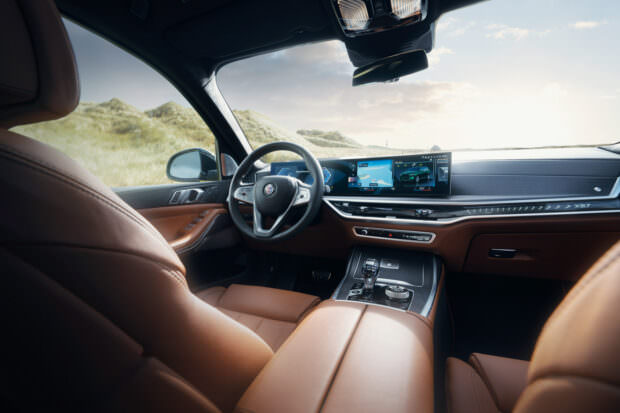
The interior doesn’t see many changes from the X7, with the same high levels of tech and automation. That includes BMW’s Curved Dash display, which didn’t feature on either the pre-facelift X7 or the old version of the XB7. The system runs the latest version of BMW’s iDrive 8 operating system. In the system’s operation, the driver encounters some of the few Alpina-specific interior touches — the glass iDrive controller is an Alpina-only design, as is the illuminated blue gear selector. Other small design nods setting the XB7’s interior apart from that of the M60i include blue gauge graphics on the digital instrument cluster, an Alpina steering wheel, wooden trims on the doors, and a dashboard unique to the XB7 and not found on the X7.
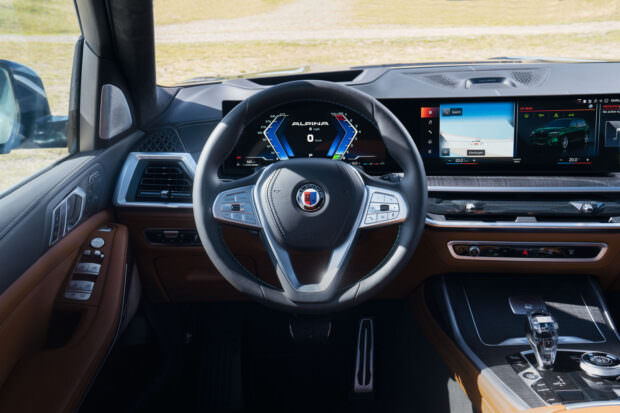
Alpina has done with the XB7 what it has always done in taking an already-competent BMW as its base and thoughtfully improving it without much in the way of visible theatrics. Subtlety (insofar as the big X7 can ever be subtle) is, as ever, the key with Alpina: if you know, you know.
